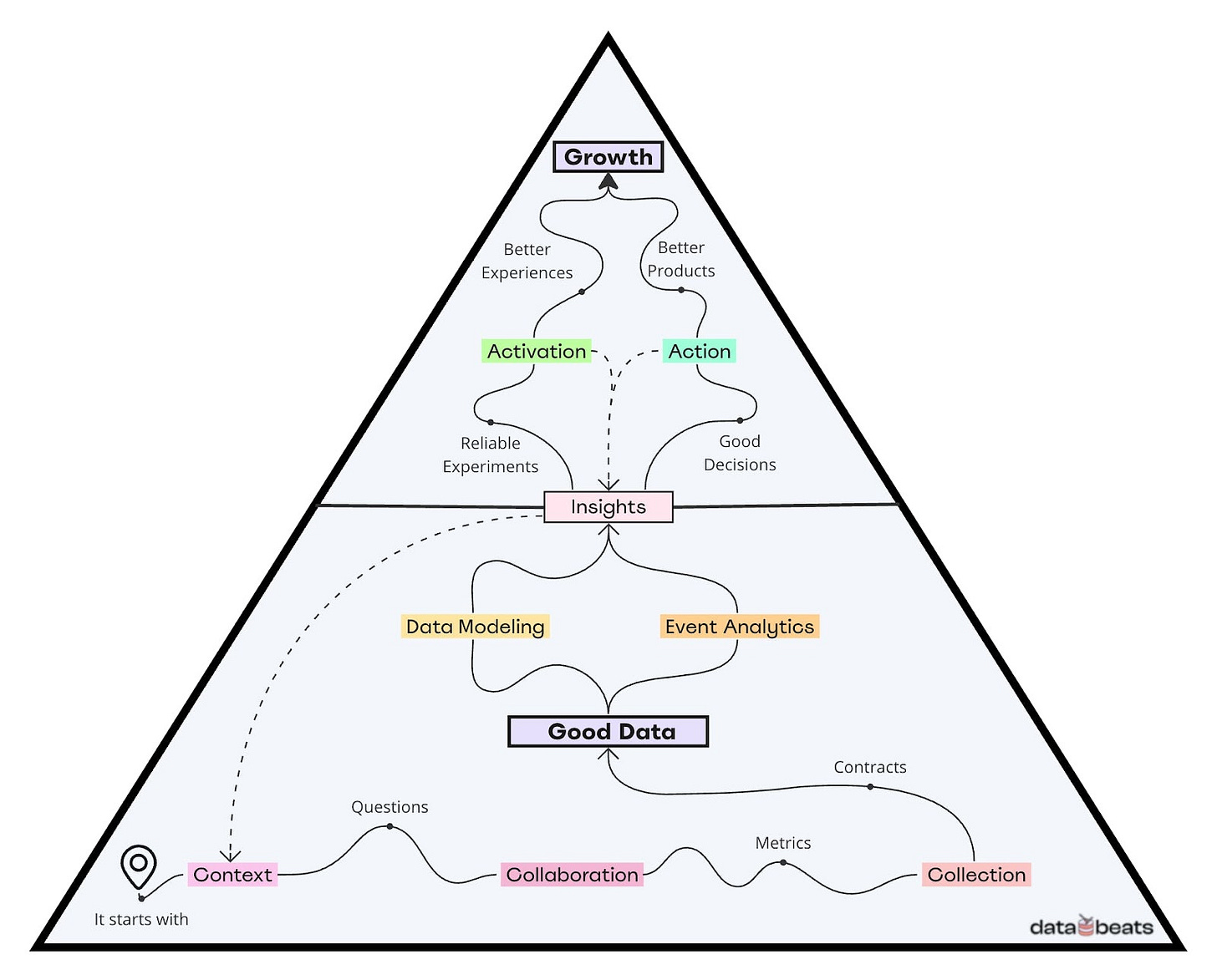"Why does an organization collect data?"
I've been looking for one, straightforward, concrete answer to that question for a while as I wasn't convinced that the primary reason to collect data was to make decisions or deliver personalized experiences.
So earlier this year, I started mapping out the data lifecycle – from collection to insights to action and beyond – hoping to find the answer.
It took some time but I did find it.
And then the task at hand was to deliver the message in the most effective way.
If you know me, you know that I really believe in the power of words; but as the saying goes, "A picture is worth a thousand words".
However, it wasn't easy to draw a picture – a visual model in this case – depicting the thinking and the reasoning behind the straightforward answer to the elusive question, "Why does an organization collect data?"
Every time I thought "This is it", someone managed to poke a hole or two in the model. Often that someone was me but not always, and I'm grateful to all the beautiful minds who helped shape my thinking and pushed me to keep iterating.
And after 27 iterations, The Good Data To Growth Pyramid is ready for prime time!
Enough said.
🥁 🥁
Introducing The GDG Pyramid
The GDG Pyramid is a visual model depicting how an organization can:
Build a foundation for Good Data
Derive good insights from the data
Turn the insights into Growth
And the one, straightforward, concrete answer to "Why does an organization collect data?" is right there in the model:
An organization collects data to enable teams to derive insights that further enable them to make decisions and run experiments to ultimately, drive growth for the business.
It's worth noting that "growth" is a fuzzy word and can mean so many things. Therefore, for the sake of simplicity, let's give it a definition:
Growth refers to any measurable outcome that’s good for an organization.
Examples of growth include more revenue, more efficiency, more profit or impact, higher CSAT, and so on.
I know what I'm positing is not necessarily a popular opinion.
I even ran a week-long poll on LinkedIn and as you can see below, growth won by an inch:
As Vin Diesel once said, "It don't matter if you win by an inch or a mile, winning's winning.
Just kidding.
This isn't a popularity contest and the only reason I ran the poll was to initiate a discussion and share the results here, which I would have irrespective of the outcome.
My goal here, as with all my efforts, is not to prescribe or preach, but to offer a perspective – one that gives you something to think about and something to act upon.
The only difference this time around, as you might already know, is that I'm turning the GDG thesis into a book called "Good Data To Growth: Make Data Fuel Your Organization’s Growth Engine".
And I've decided to release it as a WIP digital book, the first paid product by databeats that will be available for purchase in two weeks.
In the meantime, I'd encourage you to read the book introduction which offers a complete breakdown of the GDG model.
It takes about 15 minutes and I recommend reading it on your computer as the diagrams are a bit heavy on detail.





